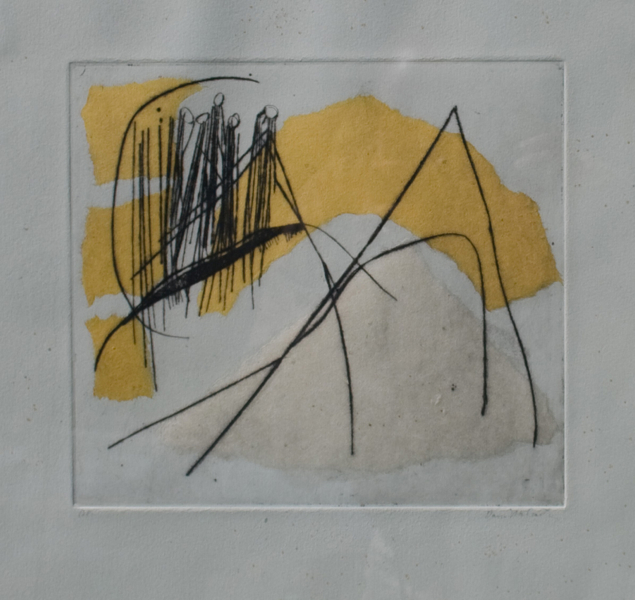Armenia
Circles, Birds, and Vegetation
During my very first days as a Fulbright Scholar in Yerevan, Armenia, the capital city of a state with 99.6% literacy, I noticed banners and signs proclaiming its status as a UNESCO World Book Capital, 2012. I realized this reverence for books posed a challenge to my method of using cut up books in my artwork, especially the Aliceheimer’s series that was the basis of my Fulbright project. I soaked in experiences but kept my scissors away from the books over the next few months, until I combined this dilemma with other issues that were crystallizing while there.
Closed borders with Turkey and Azerbaijan for all Armenians, closed borders with Ngorno Karabakh and Iran for Fulbright Scholars, and the underlying history of contested and disputed borders had me thinking about how all borders are drawn by humans. Borders on maps have been drawn and redrawn, and I could incorporate them into my drawings. What better book to cut up than colorful 1961 Soviet era atlas? I combined this with a classic book that reproduced the ornaments from Armenian illuminated manuscripts and began a series of drawings that turned these two books into dancing figures. These drawings, along with my Aliceheimer’s series were featured in the final event of Yerevan’s year as World Book Capital: The Sunny Dragon International Graphic Humor Festival, where they received a silver medal. The Armenian audiences’ response to the references to Lewis Carroll and the new life given to maps and manuscripts freed me to continue my practice of cutting up texts.
Why dancing women? I am not the first to notice how the present boundaries of Armenia resemble the head of a woman with long flowing hair. But my purpose was not a reification of oppressive gender roles. Instead, I want to start a conversation about how nationalism can turn into an ugly fetishization and objectification of land and property, much the way women have been objectified. To me, the route to peace involves a shift so that the world is not organized on the basis of owning and defending resources and property, shutting others out, taking land and resources from others.
Trips to Soviet Armenia in 1977 and Western Armenia in 1984 inspired a series of paintings and prints over the next decade or so. This land of human migrations, the origins of agriculture, silk roads, bloody history, and fierce geological activity got under my skin. Returning to independent Armenia in 2012 gave me this same feeling now embodied in these collage drawings.






